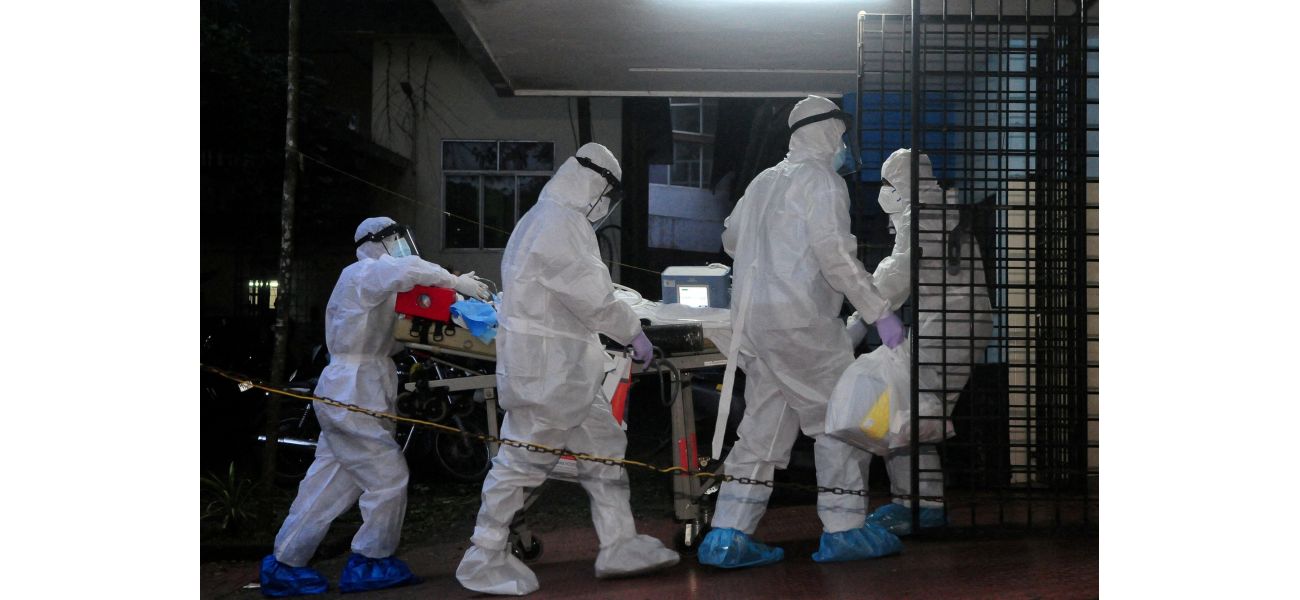A student passes away from extremely hazardous and untreatable infection.
WHO has listed a virus as a top concern due to its potential to cause a fatal outbreak.
September 16th 2024.

A young patient, believed to be infected with the Nipah virus, was recently transferred to an isolation ward at Kozhikode Medical College in Kerala, India. This comes after a student tragically passed away from a brain-swelling fever caused by the virus, which has been closely monitored by the World Health Organization.
The patient, only 24 years old, is now the second person to succumb to Nipah infection in the same town within a three-month period. The first was a 14-year-old boy who passed away in July. As a precaution, health officials are currently keeping a close eye on 151 people who had come into contact with the student to ensure that they do not develop any symptoms and to prevent further spread of the virus.
Unfortunately, there is currently no vaccine or specific treatment for Nipah. Patients are given supportive care and must rely on their own immune systems to fight off the illness. The fatality rate can range from 40% to 70%, and even those who survive may experience lasting neurological issues such as seizures and personality changes.
Some people who are infected with Nipah may not show any symptoms at all, while others may experience fever, muscle pain, and in severe cases, brain swelling that can lead to a coma within 24 to 28 hours. This is a highly concerning virus that can cause devastating consequences.
Nipah was first discovered in 1999 in Malaysia and is mainly spread through contact with infected pigs or fruit bats, as well as through contaminated food. Human-to-human transmission is also possible. The most recent victim of Nipah was a student who had traveled from Bengaluru and began showing symptoms on September 4th, ultimately passing away five days later. A blood sample confirmed the presence of Nipah on September 9th.
Authorities are also monitoring five other individuals who have shown primary symptoms and have sent their blood samples for testing. However, it is unclear if these individuals had direct contact with the deceased student.
Since its first appearance in Kerala in 2018, Nipah has been responsible for the deaths of multiple people in the state. This has led to heightened awareness and precautions in the region, as it is considered one of the most susceptible areas for Nipah outbreaks.
The World Health Organization has classified Nipah as a priority pathogen due to its potential to cause widespread epidemics, especially since there is currently no vaccine or cure. Other viruses on this list include Ebola, Marburg, Lassa Fever, Zika, and SARS, all of which require urgent research and development to effectively combat them. It is crucial that we continue to work towards finding ways to prevent and treat these deadly diseases.
The patient, only 24 years old, is now the second person to succumb to Nipah infection in the same town within a three-month period. The first was a 14-year-old boy who passed away in July. As a precaution, health officials are currently keeping a close eye on 151 people who had come into contact with the student to ensure that they do not develop any symptoms and to prevent further spread of the virus.
Unfortunately, there is currently no vaccine or specific treatment for Nipah. Patients are given supportive care and must rely on their own immune systems to fight off the illness. The fatality rate can range from 40% to 70%, and even those who survive may experience lasting neurological issues such as seizures and personality changes.
Some people who are infected with Nipah may not show any symptoms at all, while others may experience fever, muscle pain, and in severe cases, brain swelling that can lead to a coma within 24 to 28 hours. This is a highly concerning virus that can cause devastating consequences.
Nipah was first discovered in 1999 in Malaysia and is mainly spread through contact with infected pigs or fruit bats, as well as through contaminated food. Human-to-human transmission is also possible. The most recent victim of Nipah was a student who had traveled from Bengaluru and began showing symptoms on September 4th, ultimately passing away five days later. A blood sample confirmed the presence of Nipah on September 9th.
Authorities are also monitoring five other individuals who have shown primary symptoms and have sent their blood samples for testing. However, it is unclear if these individuals had direct contact with the deceased student.
Since its first appearance in Kerala in 2018, Nipah has been responsible for the deaths of multiple people in the state. This has led to heightened awareness and precautions in the region, as it is considered one of the most susceptible areas for Nipah outbreaks.
The World Health Organization has classified Nipah as a priority pathogen due to its potential to cause widespread epidemics, especially since there is currently no vaccine or cure. Other viruses on this list include Ebola, Marburg, Lassa Fever, Zika, and SARS, all of which require urgent research and development to effectively combat them. It is crucial that we continue to work towards finding ways to prevent and treat these deadly diseases.
[This article has been trending online recently and has been generated with AI. Your feed is customized.]
[Generative AI is experimental.]
0
0
Submit Comment





